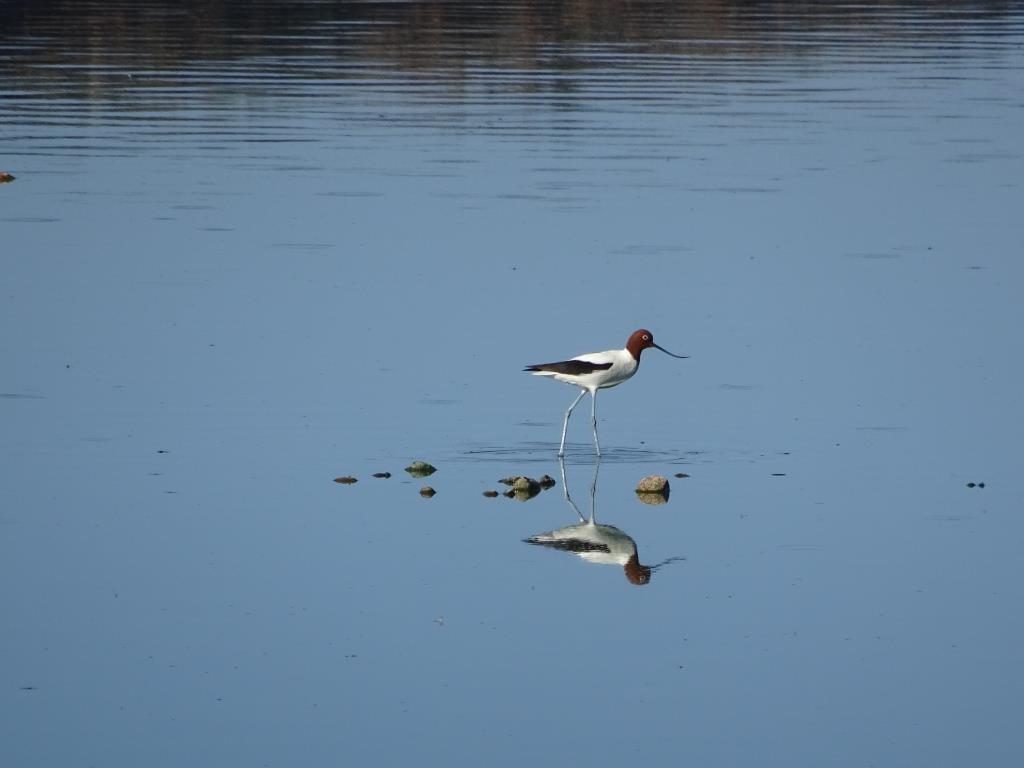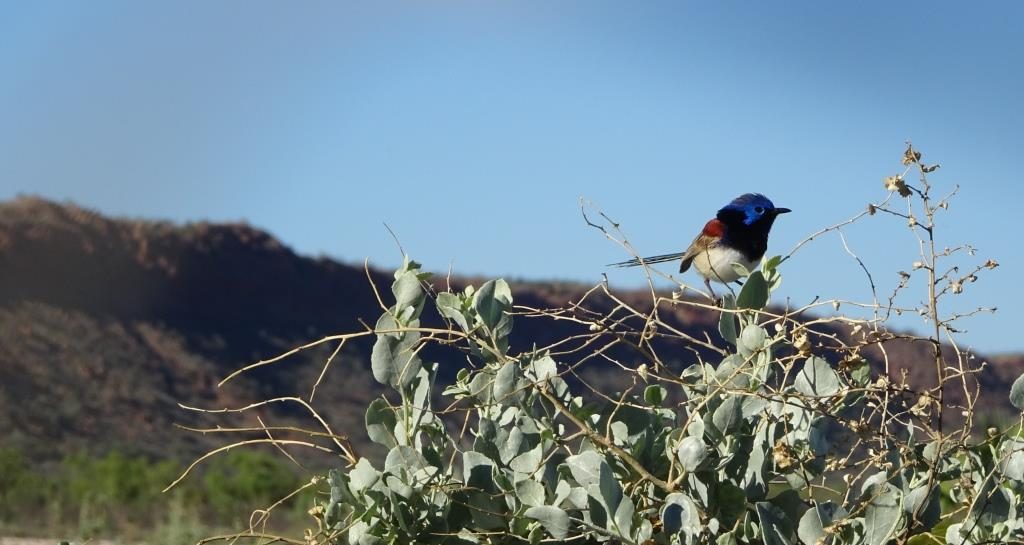Birdlife Central Australia ran a summer Shorebirds count at the Alice Springs PowerWater stabilisation ponds on the weekend. The surveys are a part of the Shorebirds 2020 program, which aims to raise awareness about how incredible shorebirds are by engaging the community to participate in gathering the information required to conserve shorebirds, by conducting national shorebird population monitoring at over 150 key sites around Australia. You can follow Birdlife Central Australia on Facebook to see what other birds they find around Alice Springs.
Barb Gilfedder, who was organising the event, states that the Bar-tailed Godwit (Limosa lapponica) was the most significant bird seen on the day, with the Grey Teal (Anas gracilis) coming out on top as most common (500!) and runner up of White-headed Stilt (Himantopus leucocephalus; marked on the graph under the previous name of Black-winged Stilt, Himantopus himantopus).
My personal favourite was a toss-up between the Red-necked Avocets (Recurvirostra novaehollandiae) that were swooping overhead, and the Variegated Fairy-wren (Malurus lamberti), which is of course not a shorebird but is utterly delightful. Plus, there were a couple of visiting reptiles, such as the Long-nosed Dragon (Gowidon longirostris)… not a bird at all!
As coordinator of Land for Wildlife, which is hosted by Low Ecological Services P/L, I am fortunate to enjoy visits to the PowerWater stabilisation ponds on a somewhat regular basis to conduct water testing. It’s difficult to stay focused on the task at hand when there is such an amazing array of birds around. A few chicks have been making their way into the world of late (see last month’s Bird Breeding Bonanza post and the October/November newsletter).
Birdlife Central Australia has also helped me to identify some of the more common species that I have noticed around the ponds, including the Wood Sandpiper (Tringa glareola) and the Common Sandpiper (Actitis hypoleucos). A large Wedge-tailed Eagle (Aquila audax) is sometimes seen at the ponds (see the video), along with many Whistling Kites (Haliastur sphenurus). If you want to visit the ponds for birdwatching, see the PowerWater factsheet for more information.
Categories:
Bird, Bird Watching, Native Fauna, Ponds, Survey













